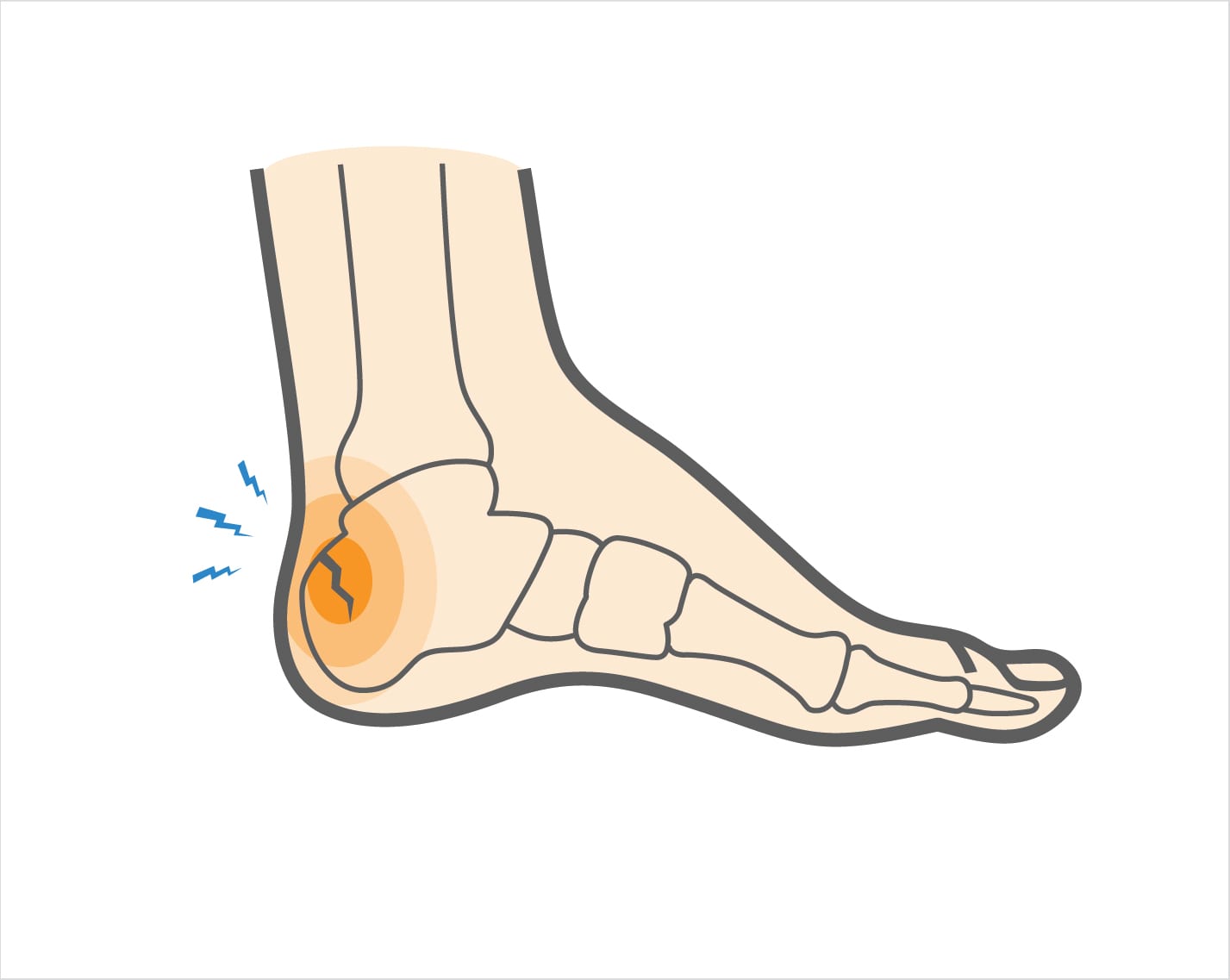The calcaneus is more commonly known as the heel bone. A stress fracture of the calcaneus is a small break in the heel bone. Located at the back of the foot, the calcaneus is essential for walking and provides support and stability to the foot. While uncommon, calcaneus fractures can be severe and require medical treatment.
Calcaneal Stress Fracture Causes, Symptoms & Treatment
The calcaneus is more commonly known as the heel bone. A stress fracture of the calcaneus is a small break in the heel bone. Located at the back of the foot, the calcaneus is essential for walking and provides support and stability to the foot
Overview
Overview

What causes Calcaneal Stress Fracture?
A broken heel bone usually happens due to an acute, high-stress injury like a motor vehicle accident, a fall from a high position, or a traumatic twist of the ankle. Tiny breaks in the bone (called stress fractures) may occur among athletes such as runners, who place repeated stress on the bone over a long period of time. A change in sport, improper technique, or osteoporosis (breakdown of the bones) can also increase your risk for a stress fracture of the calcaneus.
Stress fractures of the calcaneus are most common in these sports:
• Long-distance running
• Soccer
• Basketball
• Track & field sports
• Dance
Symptoms
With a stress fracture of the calcaneus, athletes usually experience pain in the heel that starts with activity and becomes constant over time. Other common symptoms include:
• Swelling over the heel
• Tenderness
• Difficulty walking, limping
When to see a doctor
If you experience an acute injury to your heel, or if you have pain in your heel that doesn’t get better, you should get medical treatment. At your appointment, be sure to provide the details of your injury and the sports you play. This information will help your doctor make a diagnosis.
During a physical examination of your foot, your doctor will look for signs of swelling and point tenderness over the heel. X-rays may be ordered to get an image of your heel, however if the fracture if very small or recent, it may not show up on the x-ray. Other imaging tests, such as a magnetic resonance imaging (MRI) test, may be ordered to detect a stress fracture in its early stages.
Non-operative treatment
Most stress fractures of the calcaneus will heal with non-surgical measures. Taking a break from sports that place repeated stress on the heel, such as running, is essential to starting the healing process. Additional conservative treatments may include:
• Applying ice to reduce swelling
• Using crutches to keep weight off the heel
• Wearing a boot walker or cast to provide support and protection to the heel
• Physical therapy after the bone has healed
It is helpful to wear well cushioned shoes or add gel pads to your shoes to lessen impact during weight bearing once walking is allowed
Try these exercises to help address your condition:
Below is a PDF of the Exercise Program
Surgical Treatment
Surgery is rarely required to treat stress fractures. However, very rarely surgery is needed for those stress fractures that do not heal with conservative measures.
Recovery
Recovery time will vary depending on the extent of your injury, but it’s typical for stress fractures of the calcaneus typically to take three months to heal. A return to sport may be gradual, beginning with low stress exercises such as swimming or cycling. Physical therapy will play an important role in your recovery, helping to build strength, increase mobility, and ensure you are ready for a full return to your sport.
GET BACK TO WHAT YOU LOVE. FASTER
Sources
https://orthoinfo.aaos.org/en/diseases–conditions/calcaneus-heel-bone-fractures/
https://orthoinfo.aaos.org/en/diseases–conditions/stress-fractures-of-the-foot-and-ankle/
https://www.foothealthfacts.org/conditions/fractures-of-the-calcaneus-(heel-bone-fractures)
http://www.aofas.org/footcaremd/conditions/ailments-of-the-midfoot/Pages/Stress-Fractures.aspx
https://viewmedica.com/vm/index/brochure/68/fracturedheelbone/en
https://www.verywellhealth.com/calcaneus-fracture-2549435

